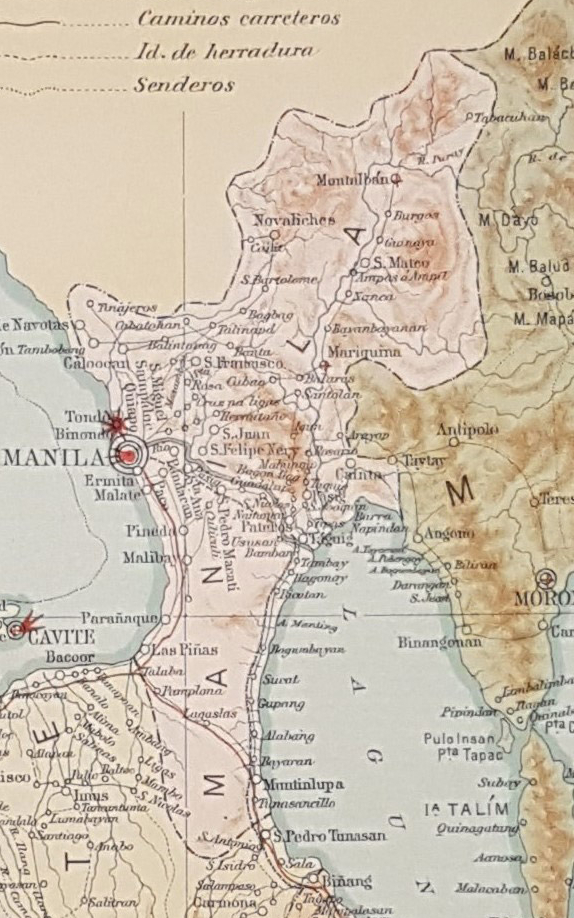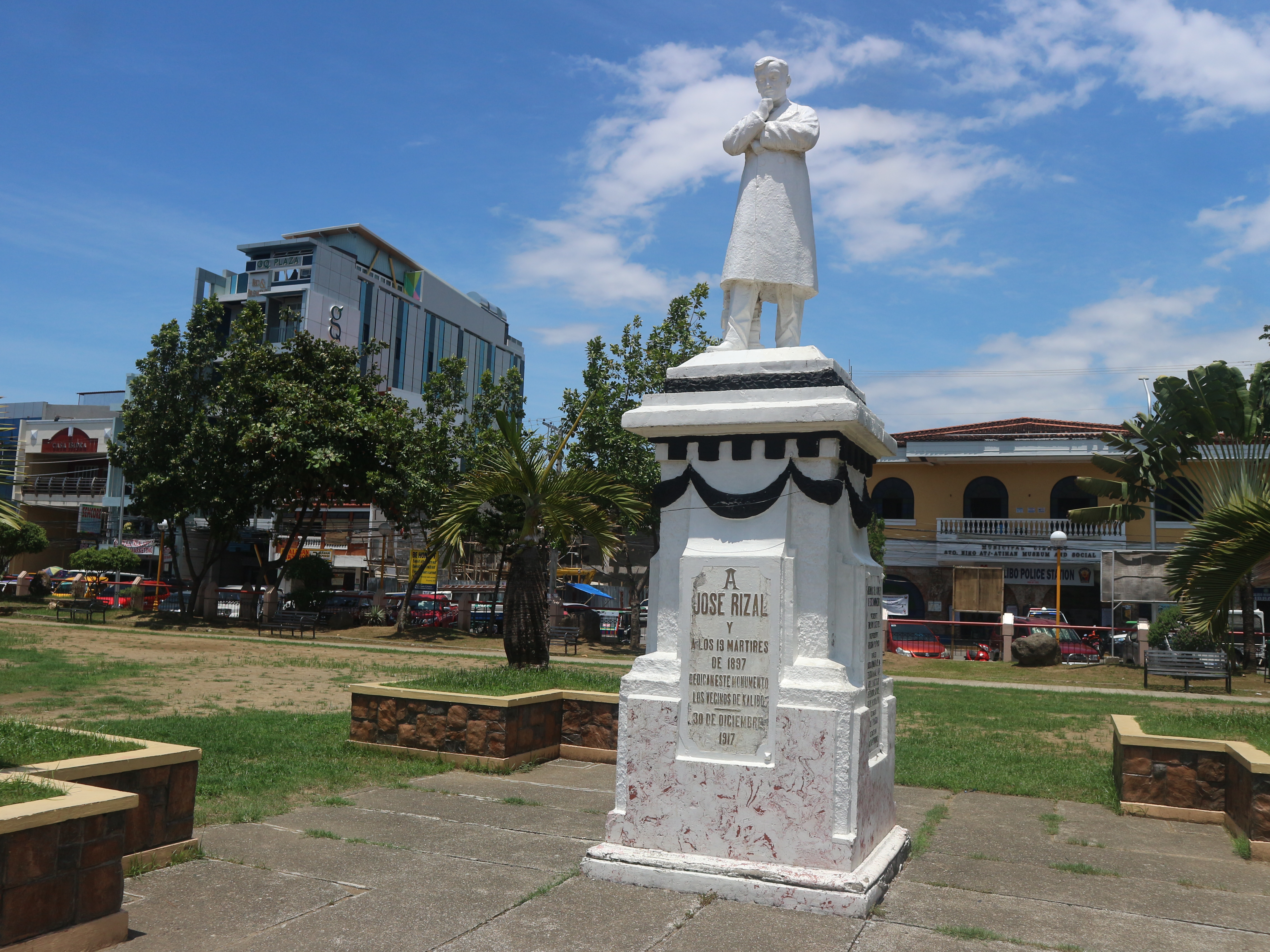|
Roman Catholic Diocese Of Antipolo
The Roman Catholic Diocese of Antipolo (Lat: ''Dioecesis Antipolensis''; Filipino: ''Diyosesis ng Antipolo'') is a diocese of the Latin Rite of the Catholic Church in the Philippines that comprises the Province of Rizal and the city of Marikina in Metro Manila. On January 24, 1983, during his Angelus message, Pope John Paul II announced the creation of the Diocese of Antipolo, which would encompass the whole province of Rizal, the entire Marikina, and part of Pasig (Barangays Dela Paz, Santolan, Manggahan, Rosario, and Santa Lucia, which altogether formed the Vicariate of Santo Tomas de Villanueva, now belonging to the Diocese of Pasig). It is an area that was previously known in the Archdiocese of Manila as the Ecclesiastical District of Eastern Rizal. The diocese was canonically established on the June 25, 1983 and is a suffragan of the said archdiocese. The first bishop of Antipolo was Protacio G. Gungon. On December 3, 2001, he was succeeded by Crisostomo Yalung as the se ... [...More Info...] [...Related Items...] OR: [Wikipedia] [Google] [Baidu] |
Rizal
Rizal, officially the Province of Rizal ( fil, Lalawigan ng Rizal), is a Provinces of the Philippines, province in the Philippines located in the Calabarzon region in Luzon. Its capital is the city of Antipolo. It is about east of Manila. The province is named after José Rizal, one of the main national heroes of the Philippines. Rizal is bordered by Metro Manila to the west, Bulacan to the north, Quezon to the east and Laguna province, Laguna to the southeast. The province also lies on the northern shores of Laguna de Bay, the largest lake in the country. Rizal is a mountainous province perched on the western slopes of the southern portion of the Sierra Madre (Philippines), Sierra Madre mountain range. Pasig served as its capital until 2008, even it became a part of the newly created Metro Manila, National Capital Region since November 7, 1975. A provincial capitol has been in Antipolo since 2009, making it the administrative center. On June 19, 2020, President Rodrigo Duterte ... [...More Info...] [...Related Items...] OR: [Wikipedia] [Google] [Baidu] |
John Paul II
Pope John Paul II ( la, Ioannes Paulus II; it, Giovanni Paolo II; pl, Jan Paweł II; born Karol Józef Wojtyła ; 18 May 19202 April 2005) was the head of the Catholic Church and sovereign of the Vatican City State from 1978 until his death in April 2005, and was later canonised as Pope Saint John Paul II. He was elected pope by the second papal conclave of 1978, which was called after John Paul I, who had been elected in August to succeed Pope Paul VI, died after 33 days. Cardinal Wojtyła was elected on the third day of the conclave and adopted the name of his predecessor in tribute to him. Born in Poland, John Paul II was the first non-Italian pope since Adrian VI in the 16th century and the second-longest-serving pope after Pius IX in modern history. John Paul II attempted to improve the Catholic Church's relations with Judaism, Islam, and the Eastern Orthodox Church. He maintained the church's previous positions on such matters as abortion, artificia ... [...More Info...] [...Related Items...] OR: [Wikipedia] [Google] [Baidu] |
Catholic Church In The Philippines
, native_name_lang = , image = Front view of The Cathedral in Intramuros, Manila.jpg , imagewidth = 250px , alt = , caption = Minor Basilica of the Immaculate Concepcion , abbreviation = , type = National polity , main_classification = Catholic , orientation = Christianity , scripture = Bible , theology = Catholic theology , polity = , governance = Catholic Bishops' Conference of the Philippines , structure = , leader_title = Pope , leader_name = , leader_title1 = President , leader_name1 = Pablo Virgilio S. David , leader_title2 = Apostolic Nuncio , leader_name2 = Charles John Brown , leader_title3 = , leader_name3 = , fellowships_type = , fellowships = , fellowships_type1 = , fellowships1 = , division_type = , division = , division_type1 ... [...More Info...] [...Related Items...] OR: [Wikipedia] [Google] [Baidu] |
Coat Of Arms Francisco De Leon
A coat typically is an outer garment for the upper body as worn by either gender for warmth or fashion. Coats typically have long sleeves and are open down the front and closing by means of buttons, zippers, hook-and-loop fasteners, toggles, a belt, or a combination of some of these. Other possible features include collars, shoulder straps and hoods. Etymology ''Coat'' is one of the earliest clothing category words in English, attested as far back as the early Middle Ages. (''See also'' Clothing terminology.) The Oxford English Dictionary traces ''coat'' in its modern meaning to c. 1300, when it was written ''cote'' or ''cotte''. The word coat stems from Old French and then Latin ''cottus.'' It originates from the Proto-Indo-European word for woolen clothes. An early use of ''coat'' in English is coat of mail (chainmail), a tunic-like garment of metal rings, usually knee- or mid-calf length. History The origins of the Western-style coat can be traced to the sleeved, close- ... [...More Info...] [...Related Items...] OR: [Wikipedia] [Google] [Baidu] |
Coat Of Arms Of Bishop Gabriel Villaruz Reyes
A coat typically is an outer garment for the upper body as worn by either gender for warmth or fashion. Coats typically have long sleeves and are open down the front and closing by means of buttons, zippers, hook-and-loop fasteners, toggles, a belt, or a combination of some of these. Other possible features include collars, shoulder straps and hoods. Etymology ''Coat'' is one of the earliest clothing category words in English, attested as far back as the early Middle Ages. (''See also'' Clothing terminology.) The Oxford English Dictionary traces ''coat'' in its modern meaning to c. 1300, when it was written ''cote'' or ''cotte''. The word coat stems from Old French and then Latin ''cottus.'' It originates from the Proto-Indo-European word for woolen clothes. An early use of ''coat'' in English is coat of mail (chainmail), a tunic-like garment of metal rings, usually knee- or mid-calf length. History The origins of the Western-style coat can be traced to the sleeved, close- ... [...More Info...] [...Related Items...] OR: [Wikipedia] [Google] [Baidu] |
Coat Of Arms Of Bishop Crisostomo Yalung
A coat typically is an outer garment for the upper body as worn by either gender for warmth or fashion. Coats typically have long sleeves and are open down the front and closing by means of buttons, zippers, hook-and-loop fasteners, toggles, a belt, or a combination of some of these. Other possible features include collars, shoulder straps and hoods. Etymology ''Coat'' is one of the earliest clothing category words in English, attested as far back as the early Middle Ages. (''See also'' Clothing terminology.) The Oxford English Dictionary traces ''coat'' in its modern meaning to c. 1300, when it was written ''cote'' or ''cotte''. The word coat stems from Old French and then Latin ''cottus.'' It originates from the Proto-Indo-European word for woolen clothes. An early use of ''coat'' in English is coat of mail (chainmail), a tunic-like garment of metal rings, usually knee- or mid-calf length. History The origins of the Western-style coat can be traced to the sleeved, close- ... [...More Info...] [...Related Items...] OR: [Wikipedia] [Google] [Baidu] |
Coat Of Arms Of Bishop Protacio Guevara Gungon
A coat typically is an outer garment for the upper body as worn by either gender for warmth or fashion. Coats typically have long sleeves and are open down the front and closing by means of buttons, zippers, hook-and-loop fasteners, toggles, a belt, or a combination of some of these. Other possible features include collars, shoulder straps and hoods. Etymology ''Coat'' is one of the earliest clothing category words in English, attested as far back as the early Middle Ages. (''See also'' Clothing terminology.) The Oxford English Dictionary traces ''coat'' in its modern meaning to c. 1300, when it was written ''cote'' or ''cotte''. The word coat stems from Old French and then Latin ''cottus.'' It originates from the Proto-Indo-European word for woolen clothes. An early use of ''coat'' in English is coat of mail (chainmail), a tunic-like garment of metal rings, usually knee- or mid-calf length. History The origins of the Western-style coat can be traced to the sleeved, close- ... [...More Info...] [...Related Items...] OR: [Wikipedia] [Google] [Baidu] |
Roman Catholic Diocese Of Malolos
The Roman Catholic Diocese of Malolos (Latin: ''Dioecesis Malolosinae''; Tagalog: ''Diyosesis ng Malolos''; Spanish: ''Diócesis de Malolos'') is a Roman Rite Diocese of the Latin Church of the Catholic Church in the Philippine, encompassing the whole Province of Bulacan and Valenzuela City in Metropolitan Manila and is a suffragan to the Archdiocese of Manila. The mother church of the Diocese is the Cathedral-Basilica of the Immaculate Conception located in Malolos City, Bulacan. The Blessed Virgin Mary, under the title of Immaculate Conception is the principal patroness of the diocese. It was excised from the Archdiocese of Manila on December 11, 1961, by Pope John XXIII and was officially established on March 11, 1962, upon the installation of Manuel P. del Rosario, then Bishop of Calbayog, by Salvatore Siino, the Papal Nuncio, as the first bishop of the diocese. He was succeeded by Cirilo R. Almario in 1977 and died on October 14, 2016. While Rolando Tirona, who is now t ... [...More Info...] [...Related Items...] OR: [Wikipedia] [Google] [Baidu] |
Roman Catholic Archdiocese Of Cebu
The Archdiocese of Cebu (more formally the Archdiocese of the Most Holy Name of Jesus in Cebu; ; ; ; ) is a Roman Rite archdiocese of the Catholic Church in the Philippines and one of the ecclesiastical provinces of the Catholic Church in the country. It is composed of the entire civil province of Cebu (Cebu and the nearby islands of Mactan, Bantayan, and Camotes). It is the Mother Church of the Philippines. The jurisdiction, Cebu, is considered as the fount of Christianity in the Far East."Cebu—Cradle of the Philippine Church and Seat of Far-East Christianity." International Eucharistic Congress 2016, December 4, 2014, accessed December 4, 2014, http://iec2016.ph/wp-content/uploads/2014/12/Cebu%E2%80%94Cradle-of-the-Philippine-Church-and-Seat-of-Far-East-Christianity.pdfThe Church of Cebu's Basilica del Santo Niño is named by the Vatican as "mother and head of all churches in the Philippines" (''mater et caput... omnium ecclesiarum Insularum Philippinarum''). See https://www.v ... [...More Info...] [...Related Items...] OR: [Wikipedia] [Google] [Baidu] |
Kalibo
Kalibo, officially the Municipality of Kalibo ( Aklanon: ''Banwa it Kalibo''; Hiligaynon: ''Banwa sang Kalibo''; tgl, Bayan ng Kalibo), is a 1st class municipality and capital of the Province of Aklan, Philippines. According to the 2020 census, it has a population of 89,127 people. Kalibo is located in the north-west of Panay. It is the main transportation hub for the resort island of Boracay. The municipality is known for the Ati-Atihan festival, the semi-urban and multi-awarded mangrove forest, the Bakhawan Eco-Park and piña-weaving which in February 2018, the National Commission for Culture and the Arts, along with the government of Aklan, began the process of nominating Kalibo piña-weaving in the UNESCO Intangible Cultural Heritage Lists. Same nomination for inclusion in the intangible cultural heritage lists is the Ati-atihan festival of the people of Aklan. Etymology The term ''Kalibo'' comes from the Aklanon word ''sangkâ líbo'', ("one thousand"), reputedly the num ... [...More Info...] [...Related Items...] OR: [Wikipedia] [Google] [Baidu] |


_(14582245888).jpg)



